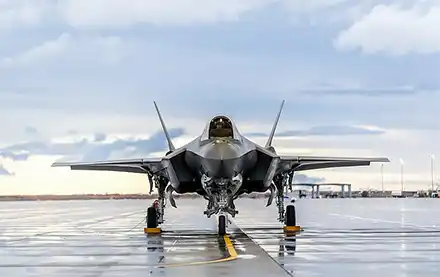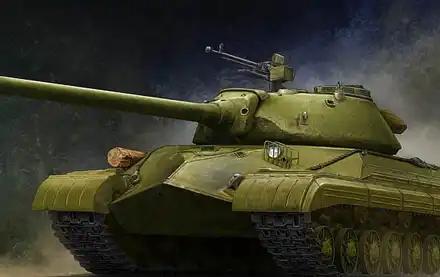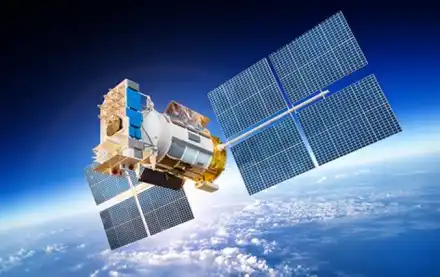




Cesare
On April 15, residents of Khartoum woke up to chaotic scenes as armoured vehicles from both forces careered through the streets, with heavy artillery fire ringing throughout the city and fighter jets roaring in the skies above.
The UAE is known to be supplying arms to both the RSF and the Sudanese Army since 2014. These weapons reportedly include small arms, ammunition, drones, and armoured vehicles.
Weapons supplied to both sides include Zastava-produced M05 rifles, Nimr Ajbans armoured vehicles (for the RSF), and Calidus MCAV (for the Sudanese Army).
Start of war
The conflict began with attacks by the paramilitary Rapid Support Forces (RSF) on government sites. Airstrikes, artillery, and gunfire were reported across Sudan including in Khartoum. Throughout the conflict, RSF leader Mohamed Hamdan "Hemedti" Dagalo and Sudan's de facto leader and army chief Abdel Fattah al-Burhan have disputed control of government sites, including the general military headquarters, the Presidential Palace, Khartoum International Airport, Burhan's official residence, and the SNBC headquarters
Sudan War
Sudan’s capital, Khartoum, has been mired in violence since April 15, when fighting broke out between the army and the paramilitary Rapid Support Forces after relations broke down between military leader General Abdel Fattah al-Burhan and RSF chief General Mohamed Hamdan Degalo.
The vicious war between the Sudanese army and the paramilitary Rapid Support Forces (RSF) has hit the two-month mark, with hostilities showing no signs of winding down despite a dire humanitarian situation that has left more than half the country in desperate need of aid.
Sudan was plunged into chaos in mid-April when a deepening power struggle between army chief Abdel Fattah al-Burhan and RSF commander Mohamed Hamdan “Hemedti” Dagalo exploded into an all-out conflict.
Entire neighbourhoods in the capital, Khartoum, have been destroyed and abandoned after more than a million residents fled. In the western region of Darfur, the fighting has taken on its own ethnic dimension, pitting Arab against non-Arab communities in a terrifying echo of the violence that made it synonymous with conflict for 20 years.
With massive artillery strikes and air raids targeting strategic RSF installations and troop clusters, the military’s actions mark a crucial turning point in Sudan’s ongoing political landscape.
Since the RSF usually confiscate captured equipment belonging to the Sudan armed forces whenever they overrun a military position it base, however, Sudan is not known operate this type of drone.
The war has dashed the heady hopes for democracy that emerged after a popular uprising led to the removal of longtime President Omar al-Bashir in 2019. Two years later, the two generals whose forces are now fighting each other orchestrated a coup that ended a fragile power-sharing agreement between the military and civilian leaders that was supposed to lead the country to elections. But rifts swiftly began to appear amid disagreements over a restructuring plan that would see the RSF integrated into the regular army.
Zastava-produced M05 rifles
Assault rifle M05 E1 belongs to group of new models of assault rifles in caliber 7.62×39 mm. All excellent characteristics of well known assault rifles M70 are kept in this model and many upgraded characteristics are result of modern tactic demans:
Main characteristics:
M05E1 is basic model without possibility to attach optical sight mount to the receiver.
Kalashnikov system ensures perfect function in all climate and terrains conditions
Excellently balanced weapon with low recoil ensures easy fire control
The best raw materials contribute to extreme durability
Hammer forged barrel ensures excellent precision
Mechanical and applied safety
Automatic and semiautomatic mode
30 rds polymer magazine
Muzzle brake disperses flash at the same time
Iron sights with tritium tubes ensure aiming in night conditions
Two-piece polymer handguards with good thermal isolation ensure comfort grip
12 o’clock and 6 o’clock Picatinny rails on the handguards
Polymer stock with easy and reliable mechanism for right side folding
Sudan’s Fighting Vehicles used in war
Tanks
T-55A
T-55A Obr. 1974
T-55M
T-55(A)MV
Iran Safir-74 ''Type 72z''
Type-59D
Type-62
Type-85-IIM
T-72AV
T-72B
M60A1
Armoured Fighting Vehicles
BRDM-2
Amir
Caiman
Infantry Fighting Vehicles
BMP-1 Two configurations: (2, with Boragh roadwheels)
BMP-1 Cobra-S
BMP-2 Obr. 1980
BMP-2 Obr. 1984
Iran Boragh Armored Infantry Combat Vehicle (AICV) ''Khatim-2''
BTR-70 Cobra-K
BTR-80A
BTR-3 Two configurations: (2, with BMP-1 turret)
WZ-551 (IFV Variant)
WZ-523 (IFV Variant)
Armoured Personnel Carriers
M113A3
YW531A ''Type-63''
BTR-70M
BTR-70MB1 Two configurations: (2, with BMP-1 turret)
BTR-80
Chekan (Mostly for use with Wagner PMC)
WZ-551 (APC Variant)
WZ-523 (APC Variant)
VN-2C
Mine-Resistant Ambush Protected (MRAP) Vehicles
Streit Group Typhoon
Calidus MCAV-20
Infantry Mobility Vehicles (IMVs)
VN-4
Iran Rakhsh (Late Model)
NIMR Ajban 440A
Streit Group/KrAZ Cougar
Streit Group/KrAZ Puma
MSPV Panthera T6
Shell LLC LAPC
Unknown Chinese IMV
Missing flag.png Unknown IMV (1) ''Sarsar-2'' Two configurations: (2)
Command Vehicles
Iran Boragh ACV ''Armored Command Vehicle''
Engineering Vehicles And Equipment
PTS-2 Tracked Amphibious Transport
GSL-130 Mine Clearing Vehicle
Type 653 Armoured Recovery Vehicle
M579 Repair And Recovery Vehicle
M88A1 Armoured Recovery Vehicle (Not yet seen)
Iran Boragh Armored Ambulance
Bridgelayer On Shaanxi Truck
Towed Artillery
122mm M-30 Howitzer
122mm D-30 Howitzer
Iran 122mm D-30I Howitzer
130mm M-46 Field-Gun
130mm Type-59-I Field-Gun
Self-Propelled Artillery
Iran 120mm Boragh AMV ''Armoured Mortar Vehicle''
122mm 2S1 Gvozdika
122mm Khalifa-1/2 (Prototype)
Multiple Rocket Launchers (MRLs)
57mm UB-32 On Technical [Range: ~]
107mm Type-63 [Range: 8km] (Most mounted on technicals and trucks)
122mm BM-21 'Grad' [Range: 20km or 40km with extended range rockets]
122mm Type-81 [Range: 20km or 40km with extended range rockets]
122mm BM-11 [Range: 20km or 40km with extended range rockets]
122mm Taka Two configurations: (2) [Range: 20km or 40km with extended range rockets]
302mm WS-1B [Range: 180km]
400mm WS-2B [Range: 200km]
UAE
The United Arab Emirates (UAE) has been providing arms to both the Rapid Support Force (RSF) and the Sudanese Army, which have been involved in conflicts within Sudan.
The RSF is a paramilitary force formed in 2013 and is part of the Sudanese Armed Forces (SAF). Its primary objective is to maintain internal security and combat terrorism in Sudan.
The Sudanese Army is the main branch of the SAF and is responsible for defending the country’s borders and maintaining internal security.
Weapons supplied to both sides include Zastava-produced M05 rifles, Nimr Ajbans armoured vehicles (for the RSF), and Calidus MCAV (for the Sudanese Army).
The country has been involved in the conflict in Yemen since 2015, where it has been supporting the Saudi-led coalition with weapons and military personnel. The UAE has also been involved in the conflict in Libya, where it has supported the Libyan National Army.
Libya
On 18 April, an SAF general claimed that two unnamed neighbouring countries were trying to provide aid to the RSF.
According to The Wall Street Journal, Libyan warlord Khalifa Haftar, who is backed by United Arab Emirates and the Russian paramilitary Wagner Group, dispatched at least one plane to fly military supplies to the RSF.
The Observer reported that Haftar assisted in preparing the RSF for months before the conflict broke out. The Libyan National Army, which is commanded by Haftar, denied providing support to any warring groups in Sudan and said it was ready to play a mediating role.
Egypt
On 16 April, the RSF claimed that its troops in Port Sudan were attacked by foreign aircraft and issued a warning against any foreign interference.
Egyptian POWs
On 15 April, RSF forces claimed, via Twitter, to have taken Egyptian troops prisoner near Merowe, and a military plane carrying markings of the Egyptian Air Force
Around that time, the SAF reportedly encircled RSF forces in Merowe airbase. As a result, the Egyptian Armed Forces announced that it was following the situation as a precaution for the safety of its personnel.
Ethiopia
On 19 April, the Sudanese newspaper Al-Sudani reported that the SAF had repelled an invasion by the Ethiopian Armed Forces in the disputed Al Fushqa District. The report alleged that the Ethiopian Army had carried out an attack with tanks, armored vehicles, and infantry and that the SAF had inflicted heavy losses on Ethiopian personnel and equipment.
Abdul Qadir Al-Haymi, a journalist at Al-Sudani, expressed his regret for publishing the story about the Ethiopian incursion, emphasizing that the story was not true and that no clashes had occurred between Sudanese and Ethiopian forces, regretting what he called "confusion" caused by the news
Casualties
As of 17 June, more than 3,000 people had been killed and 6,000 others had been injured, according to the Sudanese Health Ministry. On 12 June, the Sudan Doctors Syndicate said at least 959 civilians had been killed and 4,750 others were injured.
On 6 May, Save the Children UK said that at least 190 children had been killed in the conflict. Doctors on the ground warned that stated figures do not include all casualties as people could not reach hospitals due to difficulties in movement. A spokesperson for the Sudanese Red Crescent was quoted as saying that the number of casualties "was not small".